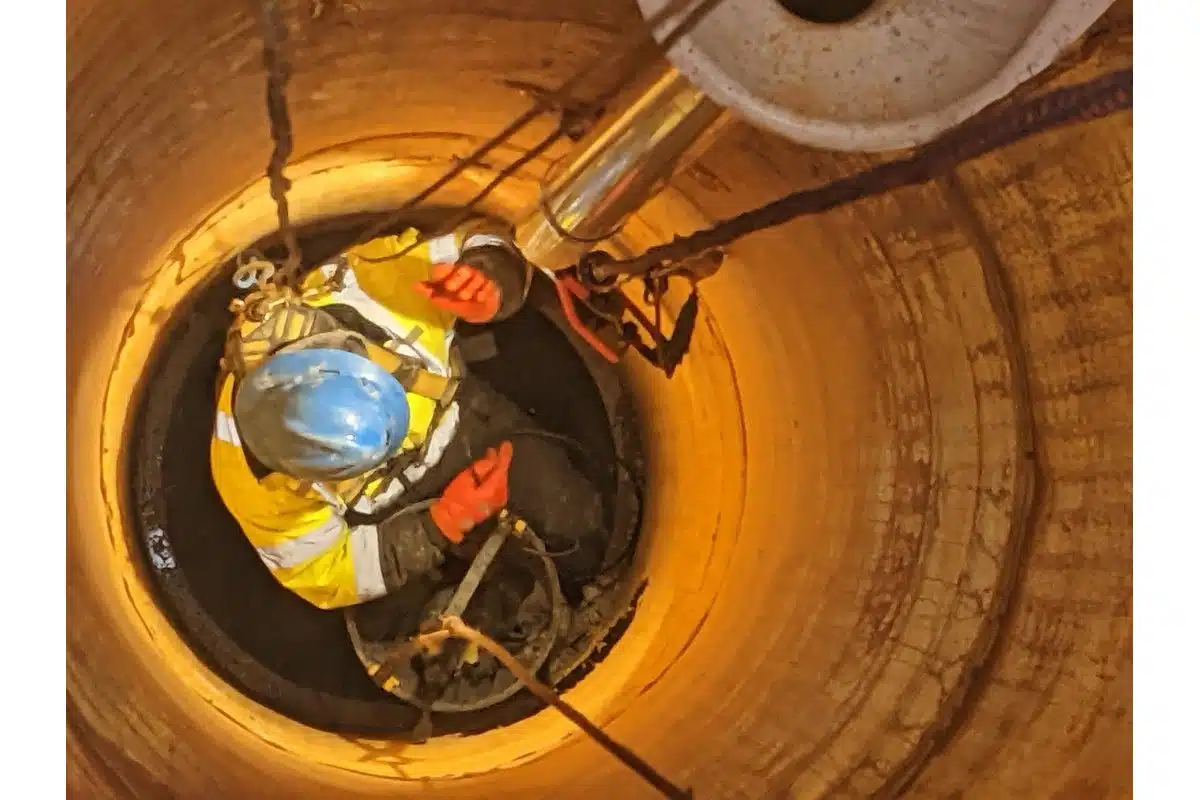
NASSCO Report – Manhole Rehab Standing the Test of Time
The manholes shown above and below are representative of several structures that were recently rehabilitated by Green Mountain Pipeline Services LLC (GMPS) in the Connecticut towns of Westport and Plymouth. Both projects involved precast manholes that were located immediately downstream of a force main discharge.
Force mains, particularly those with long travel times, can cause the flow stream to become anaerobic, resulting in the creation of high levels of hydrogen sulfide (H2S). H2S is a colorless, poisonous gas with a rotten egg odor, which is commonly referred to as “sewer gas.”
When that flow is discharged into the receiving structure, the transition from anaerobic to aerobic transforms the H2S into sulfuric acid. Sulfuric acid is highly corrosive, and eats away at Portland cement and metallic structures, in both pipes and manholes. This corrosion usually affects structures two to three segments downstream of a force main discharge. As can be seen in the photos above, over time the corrosion in a manhole can be significant, creating unsafe conditions. This condition is also seen at pump stations with low cycle times, where H2S gas can be generated in the anaerobic conditions in the wet well and force main.
RELATED: NASSCO Report – Lateral Rehab in Extreme Conditions
The Town of Westport identified three manholes that were severely deteriorated from hydrogen sulfide downstream of the discharge point of a 12-in. diameter, 2-mile-long force main. The force main discharge manhole was particularly difficult to access since the force main entered the manhole from the bottom. This configuration required bypassing of the force main flow to allow for rehabilitation.
A bypass connection in the force main was installed 30 ft upstream of the discharge manhole, resulting in an additional cost for the Town. What is interesting is that these manholes were only six to eight years old and were epoxy-coated from the manufacturer. What was not known at the time was that the joints in the manholes should have been filled in with cementitious material and then epoxy coated to ensure the manhole epoxy coating was monolithic throughout the structure with no pin holes.
The Westport manholes were rehabilitated using a composite system that Green Mount Pipeline Services has had tremendous success with for over the past 20 years. The manholes were first pressure washed and after being properly prepared 1 to 2 in. cementitious liner with added corrosion protection was applied and troweled to ensure a good mechanical bond with the original structure. After troweling, the surface was lightly brushed to create a textured surface which increases the surface area of the applied 100 percent solids epoxy and creates the opportunity for a mechanical bond between the cementitious liner and the epoxy. After the cementitious liner was cured the GMPS crew applied 125 mils of solids epoxy.

A similar situation existed in the Town of Plymouth, where three manholes downstream of a 10-in. diameter force main, 5,165 ft long Force main discharge were also suffering from severe H2S corrosion. These three manholes received a ½-in. to 1-in. coating of the cementitious liner.
RELATED: Aging Infrastructure & Manhole Rehab in Massachusetts
Note in the Westport photo on the right that the flows were bypassed and the force main discharge connection can be seen at the bottom of the manhole and the image of the Plymouth discharge manhole show where the force main enters the structure on the left.

The last photo shown above is of a manhole that had experienced severe H2S corrosion. The same composite system was used on this manhole, as well. The rehabilitation on this manhole was completed in 2008 and 14 years later it nearly looks the same as when it was first rehabilitated.
Ray Bahr, P.E. is with Green Mountain Pipeline Services and is NASSCO ICGC Co-Chair.




